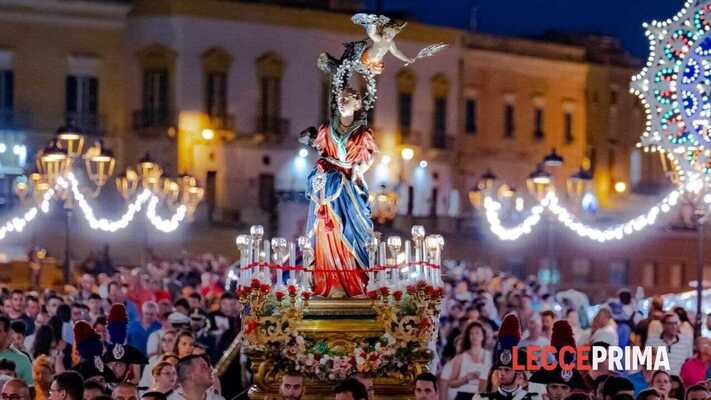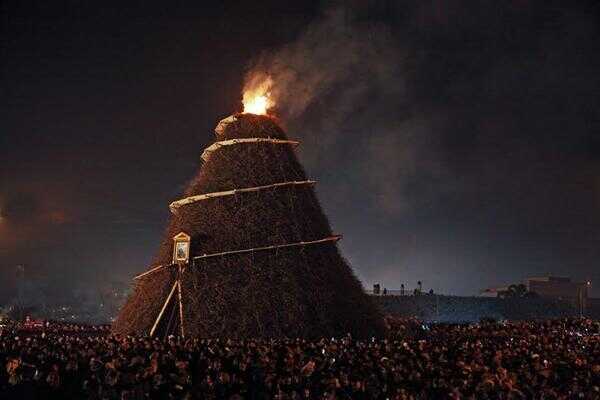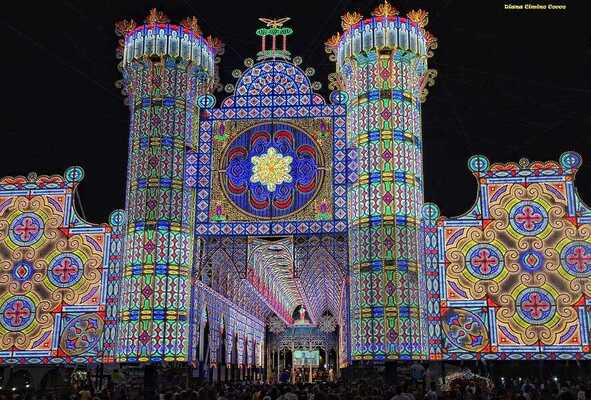Music of Salento: the rhythm of the earth
Those born in Salento hardly forget it… It’s a sort of magical contagion, something that remains in your blood, even if life with its experiences takes you thousands of kilometers away. There are many testimonies of this magical land that is Salento, particularly in the music of many artists born here. Artists of the caliber of Alessandra Amoroso, Emma Marrone, Negramaro, Sud Sound System and many others who have become famous far from their homeland, who never miss an opportunity to reiterate how much they are still linked to Salento, describing with ecstasy the culinary delights that have characterized the their childhood and the wonderful places that were the setting for their youth.

Music of the soul: pizzica and taranta
- There are melodies that are inextricably linked to the territories from which they come, a type of music that in recent years is making itself known to an ever-increasing number of people, fascinating everyone with its hypnotic rhythm, an ideal background for a landscape made up of expanses of olive trees, sun, fertile red earth and sea as far as the eye can see: the pizzica.
- Salento is also a reminder and attraction for its sounds, its songs and its dances; homeland of the culture of “tarantismo“, i.e. the culture of the “taranta“. The taranta is a spider that inhabits the countryside of Salento and according to ancient and popular beliefs it bit, or rather pinched (from this the music and dance of the “pizzica” takes its name) the poor peasants who put their foot between the stones or the ‘grass.
The only way to heal from this bite, which caused severe pain and irregular movements throughout the body, was to dance to the rhythm of the music, to the rhythm of pizzica. The pizzica was therefore born as a “healing” dance from the bite of the taranta.
The Notte della Taranta is the largest music festival dedicated to pizzica, traveling in Salento in August, with a final evening in Melpignano, where the Orchestra Popolare plays directed by concert masters of the caliber of Stewart Copeland, Ambrogio Sparagna, Ludovico Einaudi and Goran Bregovic and the great Pino Zimba to whose name the Salento pizzica is immediately attributed. Numerous groups promote pizzica around the world, such as Officina Zoè, the Canzoniere Grecanico Salentino, the Ghetonìa, the Tamburellisti of Torrepaduli.
History of Salento popular music
- To know and understand the origins of these rhythms we must start from the 1960s, when emigration became a truly mass phenomenon. Thousands of Salento people went everywhere in search of work and better living conditions, moving away from their cultural context of origin.
- In the meantime, two important abandonments occurred: the progressive abandonment of the lands and the abandonment of tarantism. In short, tarantism was condemned by the new generations, increasingly attentive to new cultural proposals and less and less interested in learning the stories, songs and sounds of tradition from their fathers. The latter, having acknowledged this, began a real phenomenon of retreat into private life, who tenaciously continued to sing, play, tell stories, produce musical instruments, but they were few and they did so mostly in private contexts. and for passion. Thanks to these people, the phenomenon of rediscovery began.
- Some of these young people rediscovered the songs in a political key, given the 70s a period of movements, protests, ideologies that now pervaded the minds and hearts of many young people: communism and socialism.
In short, from this multifaceted and heterogeneous cultural congeries, in the wake of the success of the Nuovo Canzoniere Italiano, the Salentino Folk Group was born first, then the Nuovo Canzoniere del Salento and finally the Canzoniere Grecanico Salentino.
- Between the 1980s and the early 2000s the first concerts of Salento popular music groups began, even outside the Apulian territory, due to the increasingly numerous requests for ethnic music, since popular music festivals began to flourish throughout Italy, such as the famous Folk Island of Bergamo, the popular music festival of Forlimpopoli or the Pisa Folk Festival.
Salento reggae
Salento has found itself at the center of tourist attention, for numerous reasons. First of all because the path of rediscovery of popular music and local traditions intrigued numerous scholars, who went to Salento to analyze a very peculiar phenomenon: festivals, parties and squares invaded by people eager to play, sing and revive old popular music. Therefore, until a few years ago, Salento tourism was predominantly “ethnic” and, in any case, aimed at learning about local traditions.
Another reason that brought fame to Salento is linked to reggae music. Salento reggae was born at the end of the 80s, this story coincides with the story of a group of boys (who later became Sud Sound System) and their unconditional love for Reggae music, in that land, Salento, so far away from the so-called “circuits” and at the same time so rich in culture and traditions.
But, as often happens, the history of Salento reggae is not geographically limited to the province of Lecce, it is in fact intertwined with that of the squats in Bologna, the city where most of the group’s members resided for study purposes. Here at the end of ’88 the young people of Salento gave life to mythical street apparitions under the porticoes of via Avasella 12 and in the occupied premises of the newly founded Isola Nel Cantiere.
Also in Bologna another parenthesis of Salento reggae opened: with Treble on guitar and vocals, Gopher on drums and Giorgio Pizzi on bass, the Rough Ryders were born in October ’89, a band that toured the universities they were under occupation in Bologna. Only one demo of theirs remains, which cannot be found today (One Blood).
Later, other reggae music groups in Salento would develop such as Boomdabash, Mama Marias, Ghetto Eden and many others.
Music profiles
Following the rediscovery of Salento folk songs, the traditional music of Salento has continued to tell stories and numerous revival groups have been formed over the years.
- On a textual level, the example of the Aramirè group (Salento music company) is significant, as they have given wide prominence to current social issues.
- An artist who grew up in peasant society and subsequently matured artistically and culturally, so much so that she has become a sort of synthesis between musical evolution and memory, is Anna Cinzia Villani.
- On the musical profile, the project of the Mascarimirì group is interesting, which links pizzica-pizzica to other musicalities (gypsy, oriental, dub, etc.). Mascarimirì are also committed to the recovery of traditional sounds by combining sound research with the criticism of the banalization of popular music.
- Also on the musical profile, emphasis should be given to the Officina Zoè group, which has been able to evolve Salento popular music by proposing traditional but at the same time new sounds.
- On the musical and textual profile, the Canzoniere Grecanico Salentino, founded in 1975 by Rina Durante, deserves great attention. The proposed song is despicable not only for the text, but also because the video was shot in the ACAIT headquarters in Tricase.
- Great attention deserves Mino De Santis, a Salento singer-songwriter originally from Tuglie, who was able to analyze pieces of life, habits and customs by skilfully mixing the use of dialect and Italian in his singing.
- Finally, a mention deserves the showman Andrea Baccassino, from Nardò who chose to tell plausible stories, with funny lyrics and using famous songs as a basis, obviously in dialect.
Salento artists

Once again Salento, land of pizzica, but also of reggae, jazz and pop, proves to be a fertile land for the birth of musical innovations to be exported to the national territory and there are many people from Salento who have become famous in the musical field.
- Negramaro, a Salento group that takes its name from wine and grape variety. Over the years, the successes for this Italian pop rock band have been countless: they have participated in national and international music festivals, they have seen their songs adopted as soundtracks for films, documentaries and television commercials; have recorded musical pieces in the United States. It was the first Italian band to hold a concert at the San Siro stadium in Milan.
- Emma Marrone became famous between 2009 and 2010, after her victory on Amici. Emma is from Salento and lived for most of her life in Aradeo with her parents of Salento origins; she herself feels and defines herself as Leccese. Contributing to her success was her victory at the 62nd Sanremo Italian Song Festival, in 2012, with the song “Non è l’inferno”.
- Dolcenera is the stage name adopted by Emanuela Trane. She was born in Galatina and lives in Scorrano in the province of Lecce together with her parents and younger brother. Her first success dates back to 2003 with the victory of the 53rd edition of the Sanremo Festival with the song “Siamo tutti là fuori”.
- Alessandra Amoroso, born in Galatina and lived in Lecce, achieved success in 2009 by participating in the talent show Amici di Maria De Filippi. Sandra’s abilities, as her friends call her, are immediately evident to artists of the caliber of Laura Pausini and Gianni Morandi who show their respect for her.

Festivals in Puglia: the most important events
The best way to learn about the traditions and culture of a place is through festivals: in Puglia these take place all year round, allowing both locals to rediscover their roots and tourists to taste typical products and traditional dishes venue in a cheerful and carefree context, suitable for making friends and spending a pleasant evening enlivened by music and folklore.

Novoli Focara
Salento is beautiful not only in summer; every period of the year tells us something about this land rich in ancient events and traditions, all to be discovered. If you are on holiday in Salento in January and you like traditional festivals, don't miss the opportunity to participate in one of the most characteristic festivals in the world: the "Focara". The Focara of Novoli is the most awaited annual event of the winter Salento, steeped in folklore, popular religiosity with an extraordinary setting of music, art, entertainment and food and wine.

Illuminations of Salento
In Salento there is a town that celebrates its Saint in great style by combining charm and folklore, tradition and innovation, illuminating with lights and colours: Scorrano, 30 km from Lecce, which has become famous throughout the world for its incredible illuminations

